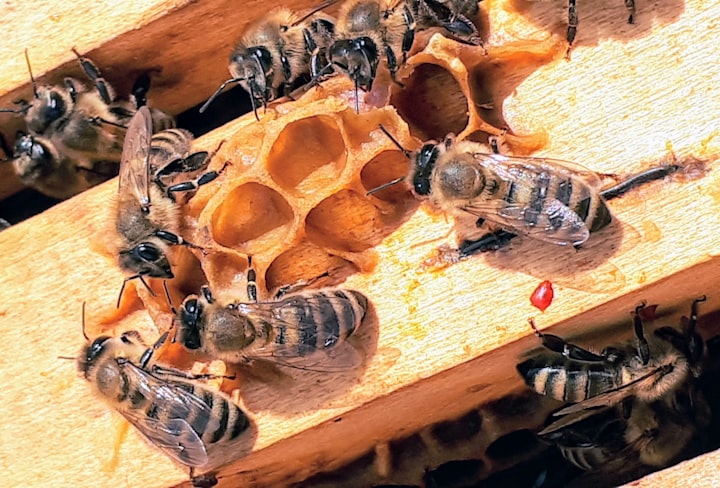How to get rid of bees without killing them
Bees are important

The importance of bees and the impact they have on the environment has been widely acknowledged in various studies. Environmental changes have resulted in the worldwide bee population decreasing rapidly and protecting bees is a task everyone needs to take seriously. In addition to providing honey bees are needed to pollinate numerous plants that provide us with food and many other essential ingredients for various products, we have come to rely on. Without bees pollinating plants, it is estimated farmers would need to spend huge amounts of money to pollinate crops using other methods.
Bees of course also make honey which is not only a source of nutrition but also used for numerous medicinal purposes.
The reasons bees will sting
Bees will only sting when they are agitated or unable to get away from a perceived threat or their hive is in danger. The most obvious concern when it comes to removing bees is how to avoid being stung without killing them. There are recognized methods to remove bees from their hives that will not harm the bees and killing bees should be avoided whenever possible. It is advisable to use these methods to encourage the bees to leave their hive or nest and not to try to actually remove a hive or nest until it has been abandoned. To prevent being stung always move away slowly when you see a bee or bees.
Location of Bees
Check where there are clusters of bees gathering to get an indication of where they have built a hive or are nesting. If you are unsure where the bees are, then it will be difficult to get rid of them using these methods.
Types of bees and locations
• Honey Bees form beehives to live in outside and they die when the first time they sting
• Bumblebees live in large groups in burrows underground, wall cavities, holes in the ground, under sheds or in undisturbed compost heaps. They are capable of giving multiple stings
• Ground Bees and Yellow Jackets live in burrows and nests underground
• Carpenter Bees live inside tunnels in trees or wood and can cause significant damage
• Mason Bees nest in walls and holes in masonry
• Solitary Bee live in nests alone but close to other solitary bees nests in 'villages'
How to tell the difference between bees, wasps and hornets
• Bees look different due to the minitour hairs that cover their bodies which gives them a 'furry' appearance
• Wasps have yellow and black rings on their bodies and longer bodies with a tapered waist
• Hornets have brown, red and yellowish-orange markings and their body can be as long as 5.5cm
When to call a professional beekeeper
Bees and beehives are valuable and it is always worth checking to see if you have any beekeepers near by. Contact them first and see if they would be willing to come and remove them for you. Alternatively, in the UK you can also contact the Environmental Health Department for assistance.
Natural methods to remove bees
• Fire and smoke: Bees are afraid of smoke as it is a warning sign of fire. To encourage bees to leave their hive you will need to light a small fire directly beneath their hive. To ensure the fire creates smoke it is advisable to use dry timber and cardboard. Once lit move away quickly as bees leaving the hive are going to be highly agitated and more likely to sting you .
• Garlic, Peppermint and Cinnamon: Bees dislike the smell of garlic, peppermint and cinnamon. You can easily make your own garlic spray with hot water and crushed garlic cloves or peppermint oil can be diluted. Spray the hive or stand as close to it as possible. Cinnamon can simply be bought in powder form and sprinkled around the hive. You will need to do this multiple times and it is not always effective.
• Citronella candles: Citronella candles are an effective way to get bees to leave an inside hive. Choose a calm day when it is not raining, open your windows and be prepared to keep the candles burning for a few days, for this method to work .
• Mothballs: Bees do not like the smell of mothballs and if you position them close to a hive it will not only persuade the bees to leave, they are unlikely to return. Make sure you replace any mothballs that become wet when left outside or they will become ineffective .
Preventing Bees from nesting or building hives
• Protect any woodwork on buildings by covering it with aluminum or vinyl
• Use polyurethane to paint woodwork that cannot be covered
• Remove any containers with standing water
• Make or buy a replica bees nest and hang it near your property
Bee repelling plants
Not only will all of these plants repel bees but they are all easy to grow, smell lovely and can be used to cook with and make your own essential oils.
• Basil: Can be made into a basil infused liquid, by crushing basil leaves and adding to hot water, spray this around areas populated with bees to encourage them to stay away
• Lemongrass: Has natural oil citronella in it and can be grown or made into lemongrass infused liquid and sprayed to deter bees
• Rosemary plants: Will repel bees and other insects
• Mint plants: Will repel bees, in addition, you can also use it to make your own mint spray to spray around areas to discourage bees
The worldwide bee population is essential and the environmental effects of a reduced bee population are far reaching and detrimental to everyone on the planet. Ensuring bees survive and the population is not eradicated is becoming increasingly essential and we hope this information will help you to repel and remove bees without causing them, or yourself any harm.
If you know of any other natural methods that will repel bees, please post them in the comments.
About the Creator
Annabelle Baugh
I enjoy researching and writing original content and have created numerous articles, broadcast scripts, and blog posts, for a range of clients, including legal, healthcare, and medical companies.






Comments
There are no comments for this story
Be the first to respond and start the conversation.